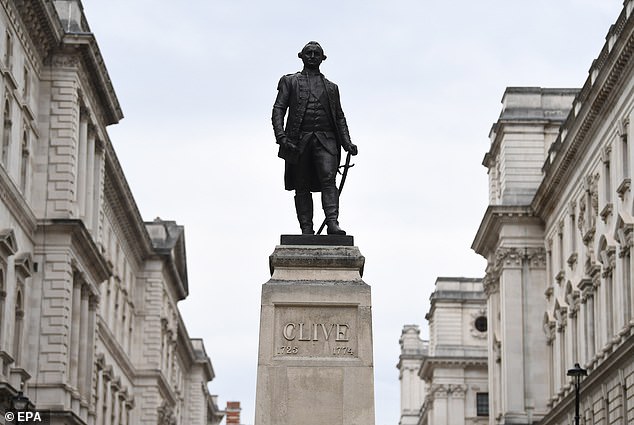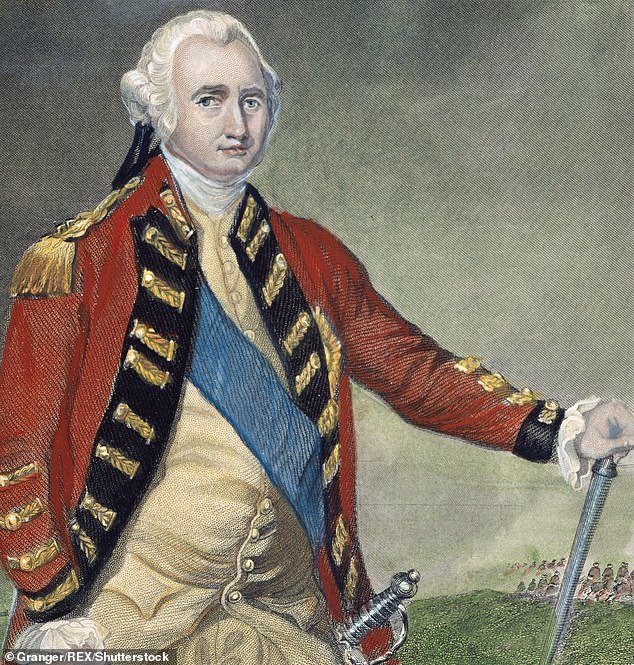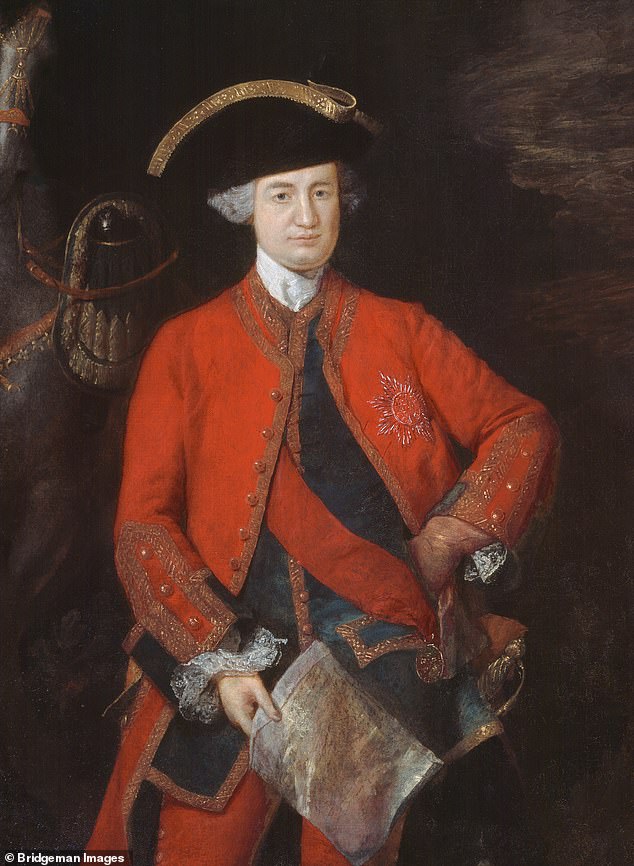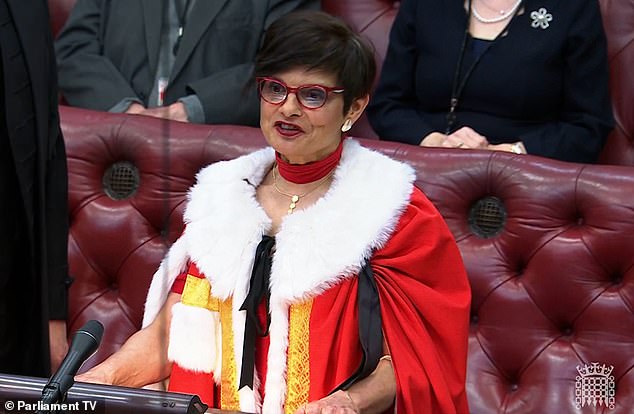A Labour peer has called for a statue of Clive of India outside the Foreign Office to be torn down because it is ‘not helpful’ for diplomacy.
Baroness Debbonaire insisted the bronze sculpture was historically inaccurate and risked souring Britain’s relationship with India.
But Downing Street distanced itself from her remarks, suggesting the removal of the statue would not achieve anything.
Robert Clive was hailed by some contemporaries for securing 200 years of British rule in India, but his personal enrichment made from plundering the region made him a controversial figure even in his lifetime.
Critics also blame his punishing taxation and land reforms while he was governor of Bengal for the Bengal Famine, which killed ten million in 1770.
Baroness Debbonaire, who served as shadow culture secretary before losing her seat at the last general election, made her remarks at the Edinburgh International Book Festival.

Baroness Debbonaire insisted the bronze sculpture was historically inaccurate and risked souring Britain’s relationship with India

Robert Clive was hailed by some contemporaries for securing 200 years of British rule in India, but his personal enrichment made from plundering the region made him a controversial figure
She told a panel: ‘I’m not sure that a statue of Clive should really have any place outside the Foreign Office.
‘I walk past it and the frieze shows happy, smiling people really delighted to see him. And that’s just not historically accurate. It’s not helpful for our current relationship with India and it is deeply unhelpful to see India as a country that Britain civilised.’
Baroness Debbonaire dismissed the statue as a ‘shocking piece of sculpture’.
Describing India’s ‘thriving’ engineering industry, she added in comments first reported by The Times: ‘It knew about free trade before free trade rules were ever written. That was closed down by an extractive colonising force.
‘But what is pictured on that statue is tiny, tiny little Indians who are subservient and incidental to their own national story, and then a great big Clive.’
Asked about her call to take down the statue, the Prime Minister’s official spokesman said: ‘I’m not sure I’ve seen that. I’m not sure you achieve very much by going round taking statues down, but I haven’t seen that.’
Historian Robert Tombs criticised Baroness Debonnaire’s comments, telling the Mail: ‘No one, least of all Clive, thought they were “civilizing” India.
‘Many of Clive’s contemporaries had huge respect for India’s cultures, and even helped to save major parts of its heritage from neglect and destruction.
‘It is absurd to say that they “closed down” the subcontinent’s economy – they were there to trade and make money, and India’s businessmen supported the British presence as the best chance of restoring law and order to amid a collapsing Mughal empire.’
Clive’s statue was erected more than 130 years after his suicide in 1774.
Despite having no military training, the Shropshire-born clerk rose up the ranks of the East India Company after a series of stunning strategic victories over the Siraj-ud-Daulah, the last independent Nawab of Bengal.

Clive eventually returned to Britain and served as MP and Mayor of Shrewsbury, rich but deeply depressed
Facing 50,000 men in 1757, Clive’s 3,000-strong private army was woefully outnumbered, but through tactical cunning and by bribing the Nawab’s cavalry commander, he routed the Bengalis, leading directly to British dominance across India.
With Clive as Governor, historian William Dalrymple wrote how: ‘Bengal’s wealth rapidly drained into Britain, while its prosperous weavers and artisans were coerced ”like so many slaves” by their new masters, and its markets flooded with British products. A proportion of the loot of Bengal went directly into Clive’s pocket.’
Clive eventually returned to Britain and served as MP and Mayor of Shrewsbury, rich but deeply depressed.
Never accepted by aristocratic circles, he was eventually brought up on corruption charges.
Despite seeing these off, he took his own life in 1774 and was buried in an unmarked grave.
In 2021, Clive’s name was taken off the name of a boarding house at his old school, Merchant Taylor’s School for Boys in Hertfordshire.
The school’s headmaster Simon Everson wrote a letter to its old boys reading: ‘Robert Clive has always been a controversial figure.
‘His actions in India were the foundations of the empire, but were also questioned by his own contemporaries. From this moment on Clive House will be renamed.’

Baroness Debbonaire, who served as shadow culture secretary before losing her seat at the last general election , made her remarks at the Edinburgh International Book Festival
The house was renamed after former pupil and Surrey cricketer John Raphael, who was capped playing rugby for England and later died a war hero in 1917.
The decision was criticised by historians.
Professor Robert Tombs, a Cambridge historian, said there was a ‘craven and mindless attitude being taken towards the British Empire by many public institutions’.
And former pupil and ex-Tory MP Lord Robathen said school chiefs should be ‘ashamed’ of themselves for ‘cancelling’ Clive.
The debate over statues was sparked by the toppling of a statue of slave trader Edward Colston in the midst of Black Lives Matter protests in Bristol in June 2020.
After it was retrieved from the river, the city’s M Shed museum put it on display in order to ‘start a city-wide conversation about its future’, next to some of the signs waved by protesters on the day the sculpture was pulled down.
It has been kept in storage for over two years; in the interim, a city-wide survey commissioned by the We Are Bristol History Commission found that four-fifths of locals supported keeping it in a museum rather than putting it back on its plinth.












